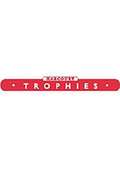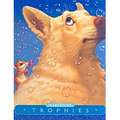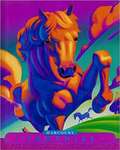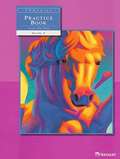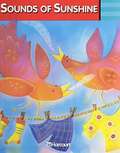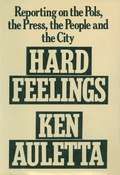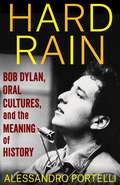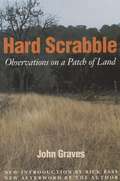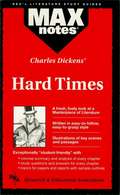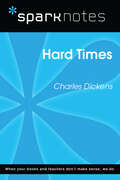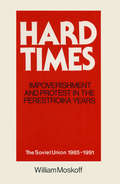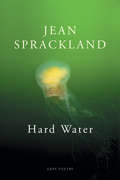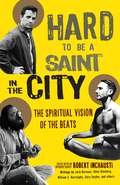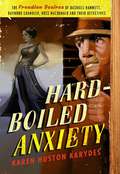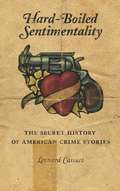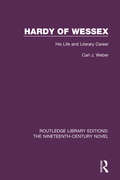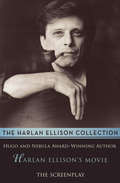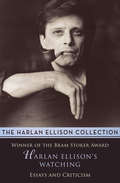- Table View
- List View
Harcourt Trophies: Gather Around
by Harcourt School PublishersReading and language arts textbook for children.
Harcourt Trophies: Guess Who Grade 1 Level 1
by Harcourt School Publishers StaffRealistic fiction stories sound like they could have happened, but they didn't.
Harcourt Trophies: Just for You
by Isabel L. Beck Roger C. Farr Dorothy S. StricklandIn Just For You, you will read about characters whose differences make them special. You will find out how helping others can be fun and can make you feel good about yourself. You will learn how many different things in nature grow and change.
Harcourt Trophies: Lead the Way (Grade #4)
by HarcourtIn Lead the Way, you will read about people who are working toward their goals by taking bold strides. Some travel to distant lands to student rare plants, while other simply plants a garden in their neighborhood.
Harcourt Trophies: Lead the Way, Practice Book (Grade #4)
by HarcourtAn easy to read practice book for children.
Harcourt Trophies: Moving Ahead
by HarcourtThis School Reading Textbook contains enjoyable reading materials for students.
Harcourt Trophies:Time Together Grade 1 Level 1-4
by Harcourt School Publishers StaffI love dogs. They play with you and they are good friends. My dog licks my face all the time.
Hard Feelings: Reporting on Pols, the Press, People and New York
by Ken AulettaKen Auletta's memoir about his time as a reporter.
Hard Rain: Bob Dylan, Oral Cultures, and the Meaning of History (The Columbia Oral History Series)
by Alessandro PortelliBob Dylan’s iconic 1962 song “A Hard Rain’s A-Gonna Fall” stands at the crossroads of musical and literary traditions. A visionary warning of impending apocalypse, it sets symbolist imagery within a structure that recalls a centuries-old form. Written at the height of the 1960s folk music revival amid the ferment of political activism, the song strongly resembles—and at the same time reimagines—a traditional European ballad sung from Scotland to Italy, known in the English-speaking world as “Lord Randal.”Alessandro Portelli explores the power and resonance of “A Hard Rain’s A-Gonna Fall,” considering the meanings of history and memory in folk cultures and in Dylan’s work. He examines how the ballad tradition to which “Lord Randal” belongs shaped Dylan’s song and how Dylan drew on oral culture to depict the fears and crises of his own era. Portelli recasts the song as an encounter between Dylan’s despairing vision, which questions the meaning and direction of history, and the message of resilience and hope for survival despite history’s nightmares found in oral traditions.A wide-ranging work of oral history, Hard Rain weaves together interviews from places as varied as Italy, England, and India with Portelli’s autobiographical reflections and critical analysis, speaking to the enduring appeal of Dylan’s music. By exploring the motley traditions that shaped Dylan’s work, this book casts the distinctiveness and depth of his songwriting in a new light.
Hard Scrabble: Observations on a Patch of Land
by John GravesThe author John Graves bought a worn-out patch of land in the hills south of Fort Worth which became a life-long attachment and this book is a humorously thoughtful description of how this new landowner becomes equally owned by the land he has settled on. In this book Graves takes us on a tour of his farm, which he calls Hard Scrabble, describing in turn the fields and streams, the plant and animal life, the weather, etc.
Hard Times (MAXNotes Literature Guides)
by Oliver ConantREA's MAXnotes for Charles Dickens' Hard Times MAXnotes offer a fresh look at masterpieces of literature, presented in a lively and interesting fashion. Written by literary experts who currently teach the subject, MAXnotes will enhance your understanding and enjoyment of the work. MAXnotes are designed to stimulate independent thought about the literary work by raising various issues and thought-provoking ideas and questions. MAXnotes cover the essentials of what one should know about each work, including an overall summary, character lists, an explanation and discussion of the plot, the work's historical context, illustrations to convey the mood of the work, and a biography of the author. Each chapter is individually summarized and analyzed, and has study questions and answers.
Hard Times (SparkNotes Literature Guide Series)
by SparkNotesHard Times (SparkNotes Literature Guide) by Charles Dickens Making the reading experience fun! Created by Harvard students for students everywhere, SparkNotes is a new breed of study guide: smarter, better, faster.Geared to what today's students need to know, SparkNotes provides:chapter-by-chapter analysis explanations of key themes, motifs, and symbols a review quiz and essay topics Lively and accessible, these guides are perfect for late-night studying and writing papers
Hard Times: A Guide for Fellow Adventurers
by William MoskoffThe book offers guidance to aspiring historians at every stage and in every walk of life, from practical advice on tackling and organizing projects to recommendations for finding and using resources of all kinds, whether at the local library or historical society or on the world wide web. It is intended to be a serious guide to the best practices for researchers as well as a good read as a collection of research stories. The author includes useful bibliographies, vetted websites, and practical advice on doing research well.
Hard Water
by Jean SpracklandThough firmly rooted in the domestic, natural world, Jean Sprackland's poems are thrilling excursions into the lives that we live alongside our everyday ones: the lives we are aware of in dreams, in grief, in love. She shows us the vertigo and vulnerability of human experience with great clarity and precision, tenderness and care. These are vivid poems full of light and weather and water: a flooded forest, acid rain, an inland tidal wave, an ocean of broken glass; jellyfish washed up on the beach that 'lay like saints/ unharvested, luminous'. There is an arresting imagination at work here, one as relaxed and at home in an alternative world of babies in filing cabinets, light collectors or the visiting dead, as it is in the world we think we know: supermarkets, empty flats, the A580 from Liverpool to Manchester.Lucid, sensuous and informed by an unusually tactile curiosity, the poems in Hard Water mark the assured arrival of an important poet.
Hard to Be a Saint in the City: The Spiritual Vision of the Beats
by Robert InchaustiAn exploration of Beat spirituality--seen through excerpts from the writings of the seminal writers of Beat Generation themselves.It’s been said that Jack Kerouac made it cool to be a thinking person seeking a spiritual experience. And there is no doubt that the writers he knew and inspired—iconic figures like Allen Ginsberg, William S. Burroughs, Gary Snyder, and Michael McClure—were thinkers seeking exactly that. In this re-claiming of their vision, Robert Inchausti explores the Beat canon to reveal that the movement was at heart a spiritual one. It goes deeper than the Buddhism with which many of the key figures became identified. It’s about their shared perception of an existence in which the Divine reveals itself in the ordinary. Theirs is a spirituality where real life triumphs over airy ideals and personal authenticity becomes both the content and the vehicle for a kind of refurbished American Transcendentalism.
Hard-Boiled Anxiety: The Freudian Desires of Dashiell Hammett, Raymond Chandler, Ross Macdonald, and Their Detectives
by Karen Huston KarydesNamed one of Kirkus Reviews' Best Indie Books of 2016. 'Curl up on the analyst's couch with all your favorite mystery scribes, as Karen Huston Karydes sleuths out the neurotic, personal threads that make up the warp and the weft of their greatest fictions. A dark, yet illuminating read.' - Kim Cooper, author of The Raymond Chandler Map of Los Angeles and The Kept Girl For close to fifty years, three masters of the hard-boiled detective novel dispatched intrepid gumshoes into upper-crust homes and seedy back alleys, peeling back and exposing all the pretexts of polite society. Or did they? Were there even closer, darker secrets they never quite copped to? In Hard-Boiled Anxiety, Karen Huston Karydes offers a new and unsettling reading of the classic pairings: Dashiell Hammett and his successive shamuses, the Continental Op, Sam Spade, and Nick Charles; Raymond Chandler and his brooding knight errant, Philip Marlowe; and Ross Macdonald and his 1960s sleuth, Lew Archer. Each novelist, though celebrated in the American pantheon, harbored ghosts, injuries, and a guilty backstory of his own. Their fictional detectives served as doubles, in ways both flamboyant and subtle, as the authors wrestled inner demons and labored, in Karydes's words, to "write themselves well." Included are remarkable observations from a memoir kept by Ross Macdonald as he underwent psychotherapy in the 1950s, never divulged at this length until the publication of this volume. Sigmund Freud, welcome to Sunset Boulevard.
Hard-Boiled Sentimentality
by Leonard CassutoLeonard Cassuto's cultural history links the testosterone-saturated heroes of American crime stories to the sensitive women of the nineteenth-century sentimental novel. From classics like The Big Sleep and The Talented Mr. Ripley to neglected paperback gems, Cassuto chronicles the dialogue& mdash;centered on the power of sympathy& mdash;between these popular genres and the sweeping social changes of the twentieth century, ending with a surprising connection between today's serial killers and the domestic fictions of long ago.
Hard-Boiled Sentimentality: The Secret History of American Crime Stories
by Leonard CassutoLeonard Cassuto's cultural history links the testosterone-saturated heroes of American crime stories to the sensitive women of the nineteenth-century sentimental novel. From classics like The Big Sleep and The Talented Mr. Ripley to neglected paperback gems, Cassuto chronicles the dialogue--centered on the power of sympathy--between these popular genres and the sweeping social changes of the twentieth century, ending with a surprising connection between today's serial killers and the domestic fictions of long ago.
Hardball for Women: Winning at the Game of Business
by Susan K. Golant Pat HeimFrom the book: "The majority of women in the business world today are oblivious to the fact that they are standing on a playing field while a game is being played around them. Until you realize that business is conducted as a sport, you'll never move ahead and you'll never win" --PAT HEIM Exploring from the ground up how boys and girls are taught to behave, author Pat Heim uses her extensive experience in the business world and a wide variety of research to show you how your behavior is interpreted to determine whether you are strong or weak, clear or vague, ambitious or passive, and, ultimately, promotable or not. Then she shows you how to understand the game of business and how to build on that understanding to succeed in your career. You'll master the following skills: How to lead men, and how to lead women. How to turn criticism and praise to your advantage. How to display confidence and power even when you feel frightened and powerless. How to be on either end of an attack during a business meeting and still remain cordial later. How to offer help so you're not seen as obstructionist. How to take risks. (continued from front flap) How to distinguish between the male and female version of a "team player." How to work with people you don't like. How to hide your vulnerability. The goal of Hardball for Women is to let you act rather than react, to help you see the rules that men play by and use them to meet your own goals, to make you feel comfortable, even exhilarated, with playing the competitive game. This book will give you the strategies that have worked to bring success in business.
Hardy Deconstructing Hardy: A Derridean Reading of Thomas Hardy’s Poetry (Routledge Studies in Nineteenth Century Literature)
by Nilüfer ÖzgürHardy Deconstructing Hardy aims to add a new dimension of research which has been partly overlooked—a Derridean, Deconstructive reading of Hardy‘s poetry. Analyzing thirty-four popular and less popular poems by Hardy, this volume challenges current references to Derridean Deconstructionism. While Hardy is not conventionally considered a Modernist poet, he shares with Modernists an element that can be referred to as the linguistic crisis by which they try to get over the sense of anxiety against the backdrop of a chaotic world and problematized language. The forerunner of Deconstructionism, Derrida, exposes a long established history of logocentric thinking, which has continually been moving between binary oppositions and Platonic dualities. Derrida simply puts forward the idea that there is no logos, no origin, and no centre of truth. The centre is always somewhere else; he identifies this as a ―free play of signifiers.‖ Consequently, the anxiety of the poet with modern sensibility to find a point of reference inevitably results in a ―crisis of representation,‖ or, in a problematic relation between language and truth, the signifier and the signified. This crisis can be observed in Hardy‘s poetry, too. For this purpose, this research focuses on four key concepts in Hardy‘s poetry that expose this problematic relationship between language and truth: his agnosticism, his concept of the self, his language and concept of structure, and his concept of time and temporality. These aspects are explored in the light of Derrida‘s Deconstructionism with reference to poems by Hardy which heralded the Modernist crisis of representation. This text will fulfill the function of reconciling theory with practice and become the manifestation of the importance of Poststructuralist criticism.
Hardy of Wessex: His Life and Literary Career (Routledge Library Editions: The Nineteenth-Century Novel #40)
by Carl J. WeberFirst published in 1940 and revised in 1965, this work by the distinguished Hardy Scholar, Carl J. Weber, traces Hardy’s literary career from High Brockhampton to the grave in Poet’s corner, Westminster Abbey. Using a multitude of letters, it explains why Thomas Hardy wrote, and how his books grew from ideas, emotions and experiences to the printed volumes that have delighted the world. This book will be of interest to those studying the works of Thomas Hardy and 19th century literature.
Harlan Ellison's Movie: The Screenplay
by Harlan EllisonHerein lies in written form Harlan Ellison's Movie, the full-length feature film Ellison created when a producer at 20th Century-Fox said, "If we gave you the money, and no interference, what sort of movie would you write?" Well, that producer is no longer at the studio; he left the entire venue of moviemaking after Harlan Ellison's Movie was seen by the Suits. There is no use even trying to describe what the film is about, except to confirm the long-standing rumor that it contains a scene in which a 70-foot-tall boll weevil chews and swallows an entire farmhouse and silo on-camera. (It is Scene 33C.)
Harlan Ellison's Watching: Essays and Criticism
by Harlan EllisonOstensibly, this is a collection of Harlan Ellison's twenty-five years of essays and film criticism for various publications. What it is in reality is pure, raw, unapologetic opinion. Star Wars? "Luke Skywalker is a nerd and Darth Vader sucks runny eggs." Big Trouble in Little China? "A cheerfully blathering live-action cartoon that will give you release from the real pressures of your basically dreary lives." Despite working within the industry himself, Ellison never learned how to lie. So punches go un-pulled, the impersonal becomes personal, and the reader is left feeling like they have read something someone actually meant. It is a gauntlet, for sure, but it is also an exhilarating release.
